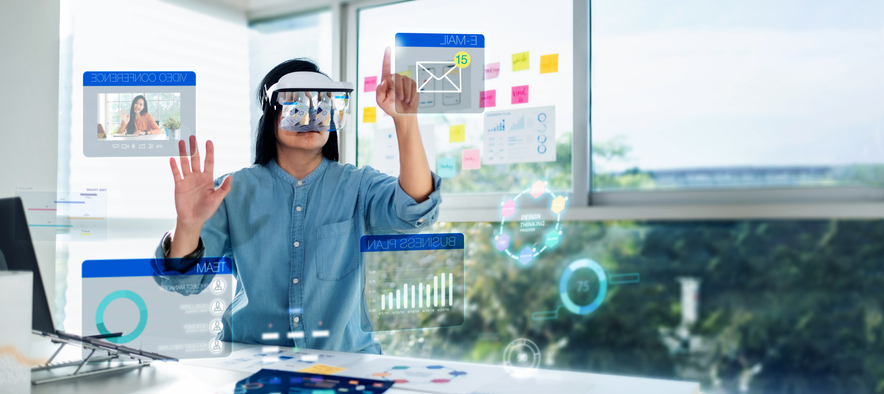Remote work is here to stay.
But the challenges it presents — namely related to employee mental health and productivity — require innovative solutions. (Also read: Implementing a Successful Remote Work Strategy.)
Luckily, in the tech world, innovation is abundant. Here are seven technologies paving the way for the future of remote work:
1. Hologram Zoom Meetings
In the remote working environment, calls through video conferencing platforms like Zoom, Skype and Microsoft Teams have become an essential part of day-to-day business operations. As such, employees' on-call backgrounds have become crucial: Moving objects, pictures, or furniture can create a less-than-ideal atmosphere.
To avoid this, the company IMVERSE has developed a way to display holographic versions of meeting participants. The hologram technology maps an individual's features through their camera to create a 3D model of them, which can be seen from anywhere in the world and does not require a green screen background.
2. Desk Holograms
There are also new technologies that could help facilitate hologram meetings, like desk holograms from companies such as the Looking Glass Factory and Cisco.
Holograms could add a level of realism to remote business calls not achievable through augmented or virtual reality. The ability to hold and analyze a 3D photograph right before one's eyes could also be useful for creators and artists who want to examine a clone of something before creating the real thing.
Though this type of hologram technology is not viable yet, it's something to watch for in the coming years.
3. Virtual Reality Meetings
Virtual reality creates a simulated environment using artificial intelligence software, allowing users to interact with 3D models as though they existed in the real world.
A new app called Arthur is bringing this concept to the world of remote work with its Oculus Quest headset. The platform allows an entire team to host meetings in the virtual world, with participants able to interact with their virtual surroundings. (Also read: Gaming, Fashion, Music: The Metaverse Across Industries.)
4. Meta’s Infinite Office
Arthur is designed to initiate virtual reality meetings using the Oculus virtual reality headset. However, Facebook (now called Meta) acquired Oculus in 2014, and it's using the technology to power its Infinite Office platform.
Infinite Office is a workplace located in the virtual realm. Individuals can access it through a headset equipped with a browser, which allows them to access all the online spaces they typically would at work. It also involves a specialized keyboard, created in partnership with Logitech, that can be tracked and delivered inside the headset. (Also read: The Metaverse: Possibilities and Perils.)
5. Futuristic Working Pods
Finding a dedicated place to work from home can be difficult. If you or your employees don't have room for a home office, a space-saving work pod could be the solution.
The futuristic "work pod" is no longer a dream; companies like Jupe are bringing the idea to life. Jupe's line of working pods, known as "Jupe Pods," was created ini response to growing evidence that design and atmosphere influence our mood as strongly as external stress factors. Named after the planet Jupiter, the geometric Jupe pods are intended as a futuristic alternative to traditional "glamping" tents and yurts.
6. Driverless Deliveries
Several giant tech companies, such as Tesla, have begun experimenting with autonomous vehicles — and some states, like California, have already green-lighted driverless deliveries.
However, Nuro is bringing this technology to the remote workforce with self-driving cars designed specifically for deliveries. It plans to start delivering products using autonomous Priuses. (Also read: Hacking Autonomous Vehicles: Is This Why We Don't Have Self-Driving Cars Yet?)
7. Mobile Offices
Toyota is also dipping its toes into the market for remote working vehicles.
Its concept, E-Pallet, is a big open-spaced container vehicle with windows down one side. Think of it like a combination of Jupe's working pod and Nuro's driverless delivery car: It's a mobile remote office that can accommodate up to 20 passengers.
Conclusion
Remote work isn't going anywhere, which is why digital communication and staying connected with colleagues from different parts of the world will only get more important.
In the coming years, new technologies will allow more people to work at home, and new software will allow workers to collaborate more efficiently and productively.






